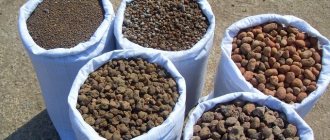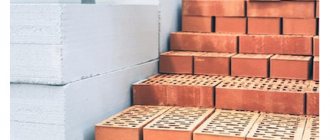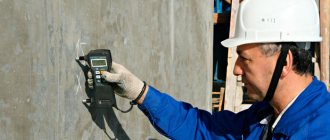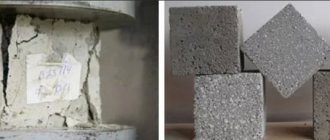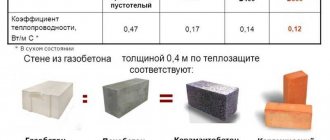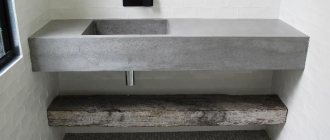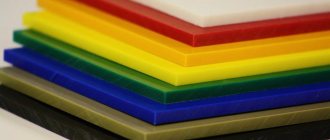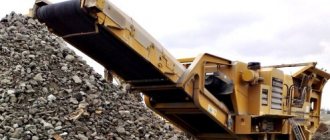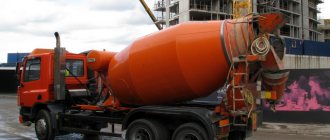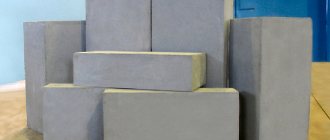| Thermal expansion coefficient | |
| β = 1 V ( d V d T ) p {\displaystyle \beta ={\frac {1}{V}}\left({\frac {dV}{dT}}\right)_{p}} | |
| Dimension | −1 |
| Units | |
| −1 | |
| GHS | −1 |
The coefficient of thermal expansion
is a physical quantity that characterizes the relative change in the volume or linear dimensions of a body with an increase in temperature by 1 at constant pressure. Has the dimension of inverse temperature. There are coefficients of volumetric and linear expansion.
Coefficient of linear thermal expansion
α L = 1 L ( ∂ L ∂ T ) p ≈ Δ LL Δ T {\displaystyle \alpha _{L}={\frac {1}{L}}\left({\frac {\partial L}{\ partial T}}\right)_{p}\approx {\Delta L \over {L\Delta T}}} , К−1 (°C−1) - relative change in the linear dimensions of a body resulting from changes in its temperature by 1 K at constant pressure.
In general, the coefficient of linear thermal expansion may be different when measured along different directions. For example, anisotropic crystals and wood have linear expansion coefficients along three mutually perpendicular axes: α x ; αy ; α z {\displaystyle \alpha _{x};\alpha _{y};\alpha _{z}} . For isotropic bodies α x = α y = α z {\displaystyle \alpha _{x}=\alpha _{y}=\alpha _{z}} and α V = 3 α L {\displaystyle \alpha _{V }=3\alpha _{L}} .
For example, water, depending on temperature, has a different coefficient of volumetric expansion:
- 0.53·10−4 K-1 (at a temperature of 5–10 °C);
- 1.50·10−4 K-1 (at a temperature of 10–20 °C);
- 3.02·10−4 K-1 (at a temperature of 20–40 °C);
- 4.58·10−4 K-1 (at a temperature of 40–60 °C);
- 5.87·10−4 K-1 (at a temperature of 60–80 °C).
For iron, the coefficient of linear expansion is 11.3×10−6 K−1[1].
For steels
Table of linear expansion coefficient values α, 10−6K−1[2]
| steel grade | 20—100 °C | 20—200 °C | 20—300 °C | 20—400 °C | 20—500 °C | 20—600 °C | 20—700 °C | 20—800 °C | 20—900 °C | 20—1000 °C |
| 08kp | 12,5 | 13,4 | 14,0 | 14,5 | 14,9 | 15,1 | 15,3 | 14,7 | 12,7 | 13,8 |
| 08 | 12,5 | 13,4 | 14,0 | 14,5 | 14,9 | 15,1 | 15,3 | 14,7 | 12,7 | 13,8 |
| 10kp | 12,4 | 13,2 | 13,9 | 14,5 | 14,9 | 15,1 | 15,3 | 14,7 | 14,8 | 12,6 |
| 10 | 11,6 | 12,6 | — | 13,0 | — | 14,6 | — | — | — | — |
| 15kp | 12,4 | 13,2 | 13,9 | 14,5 | 14,8 | 15,1 | 15,3 | 14,1 | 13,2 | 13,3 |
| 15 | 12,4 | 13,2 | 13,9 | 14,4 | 14,8 | 15,1 | 15,3 | 14,1 | 13,2 | 13,3 |
| 20kp | 12,3 | 13,1 | 13,8 | 14,3 | 14,8 | 15,1 | 20 | — | — | — |
| 20 | 11,1 | 12,1 | 12,7 | 13,4 | 13,9 | 14,5 | 14,8 | — | — | — |
| 25 | 12,2 | 13,0 | 13,7 | 14,4 | 14,7 | 15,0 | 15,2 | 12,7 | 12,4 | 13,4 |
| 30 | 12,1 | 12,9 | 13,6 | 14,2 | 14,7 | 15,0 | 15,2 | — | — | — |
| 35 | 11,1 | 11,9 | 13,0 | 13,4 | 14,0 | 14,4 | 15,0 | — | — | — |
| 40 | 12,4 | 12,6 | 14,5 | 13,3 | 13,9 | 14,6 | 15,3 | — | — | — |
| 45 | 11,9 | 12,7 | 13,4 | 13,7 | 14,3 | 14,9 | 15,2 | — | — | — |
| 50 | 11,2 | 12,0 | 12,9 | 13,3 | 13,7 | 13,9 | 14,5 | 13,4 | — | — |
| 55 | 11,0 | 11,8 | 12,6 | 13,4 | 14,0 | 14,5 | 14,8 | 12,5 | 13,5 | 14,4 |
| 60 | 11,1 | 11,9 | — | 13,5 | 14,6 | — | — | — | — | — |
| 15K | — | 12,0 | 12,8 | 13,6 | 13,8 | 14,0 | — | — | — | — |
| 20K | — | 12,0 | 12,8 | 13,6 | 13,8 | 14,2 | — | — | — | — |
| 22 | 12,6 | 12,9 | 13,3 | 13,9 | — | — | — | — | — | — |
| A12 | 11,9 | 12,5 | — | 13,6 | 14,2 | — | — | — | — | — |
| 16GS | 11,1 | 12,1 | 12,9 | 13,5 | 13,9 | 14,1 | — | — | — | — |
| 20X | 11,3 | 11,6 | 12,5 | 13,2 | 13,7 | — | — | — | — | — |
| 30X | 12,4 | 13,0 | 13,4 | 13,8 | 14,2 | 14,6 | 14,8 | 12,0 | 12,8 | 13,8 |
| 35X | 11,3 | 12,0 | 12,9 | 13,7 | 14,2 | 14,6 | — | — | — | — |
| 38ХА | 11,0 | 12,0 | 12,2 | 12,9 | 13,5 | — | — | — | — | — |
| 40X | 11,8 | 12,2 | 13,2 | 13,7 | 14,1 | 14,6 | 14,8 | 12,0 | — | — |
| 45X | 12,8 | 13,0 | 13,7 | — | — | — | — | — | — | — |
| 50X | 12,8 | 13,0 | 13,7 | — | — | — | — | — | — | — |
Coefficient of linear expansion of concrete and iron
Home / About Concrete / Coefficient of linear expansion of concrete and iron
The table shows the values of the coefficient of linear expansion of building materials (CTLE) and some metals at temperatures up to 100°C. The dimension of the expansion coefficient in the table is m/(m °C) or 1/deg (K -1).
The table considers: aluminum Al, copper Cu, steel, granite, basalt, quartzite, sandstone, limestone, wall brick, clinker brick, sand-lime brick, lightweight concrete stones, aerated concrete blocks, concrete, reinforced concrete, cement mortar, lime mortar, complex plasters, wood, parallel to the grain, glass.
Of these building materials, clinker brick has the lowest coefficient of thermal linear expansion (its CTE is 3.5·10 -6 1/deg), as well as wood, plasters, wall bricks and basalt. It should be noted that a high coefficient of thermal expansion is characteristic of metals such as aluminum, copper or steel. For example, the coefficient of linear expansion of aluminum is 24·10 -6 1/deg, which is 2 times more than that of steel.
The coefficient of thermal linear expansion shows how much (relative to the size of the body) the material will elongate when its temperature increases by 1 degree.
To calculate the increase in the linear dimensions of a material due to thermal expansion, it is necessary to multiply the value of the temperature coefficient of linear expansion by the linear dimension of the material and by the temperature difference in degrees Celsius or Kelvin. For example, a wall brick (CTLR = 0.000006 deg -1) with a length of 240 mm will elongate by 0.144 mm when heated by 100 degrees.
From the values of the coefficients of thermal expansion in the table, it can be seen that the indicated building materials and metals have a positive coefficient of linear expansion, that is, they increase their size (expand) when heated.
source
Tables of values of the average temperature coefficient of linear expansion of steels TCLR (or TKR) of common grades (more than 300 steel grades) are presented at various temperatures in the range from 27°C to that indicated in the tables. For negative temperatures, the values of the true linear expansion coefficient are given.
The temperature coefficient of linear thermal expansion of steel is numerically equal to the relative change in its linear dimensions with an increase (decrease) in the temperature of this alloy by 1 degree Celsius or Kelvin.
With a positive value of TCLE during heating, the steel increases in size (expands); with a negative value of this coefficient, it contracts. Steel has a negative TCLE at ultra-low temperatures approaching absolute zero (-273.15°C). Under these conditions, the coefficient of linear expansion of steel has a small negative value and is practically equal to zero.
At temperatures from 27 to 100°C, the temperature coefficient of linear expansion of steel averages from 10 to 18·10 -6 deg -1. Steel in a heated state (depending on the type) at 900-1000°C can have a TCLE of up to 24.6·10 -6 deg -1.
Let's calculate the linear elongation of a beam made of stainless steel 12Х18Н10Т with a length of 0.5 meters when its temperature increases from 27 to 1027°C. According to the table, the average coefficient of linear expansion of steel 12Х18Н10Т in the temperature range 27…1027°С is equal to 22.3·10 -6 deg -1. Let's perform the calculation: 22.3·10 -6 ·(1027-27)·0.5=0.0111. We get the linear elongation of the beam to be 0.0111 m.
The table shows the values of the linear expansion coefficient of carbon steel in the temperature range from -173 to 1000°C. When such steel is heated, its TCLE increases and can reach 19.8·10 -6 deg -1 (for U8 steel) in the temperature range 27-650°C.
Since carbon steel consists almost entirely of iron and does not contain nickel or chromium additives, its thermal expansion coefficient is largely determined by the coefficient of linear expansion of this main component. For example, the maximum coefficient of linear expansion of steel 20, like that of iron, is 14.8·10 -6 deg -1 in the temperature range from 27 to 700°C.
Linear expansion coefficients of carbon steel
| steel grade | Temperature, °C | TCLE 10 6 1/deg |
| Steel 3, steel 3KP | -173…-73…27 | 5,5…10,1…11,8 |
| Steel 08KP | 100…200…300…400…500…600…700 | 11,6…12,3…13,2…13,7…14,2…14,6…15 |
| Steel 10 | 100…200…300…400 | 11,6…12,6…13,0…14,6 |
| 15 | 100…200…300…400…500…600…700…800…900…1000 | 12,2…12,3…13,1…13,5…14,3…14,3…15,3…14,1…13,2…13,3 |
| 20, 20KP | 100…200…300…400…500…600…700…800 | 11,1…12,1…12,8…13,4…13,9…14,4…14,8…12,9 |
| 25 | 100…200…300…400…500…600…700 | 12,2…12,7…13,1…13,5…13,9…14,4…14,9 |
| 25L | 100…200…300…400…500…600 | 11,5…12,9…13…13,2…13,5…13,8 |
| 30 | 100…200…300…400…500…600…650 | 12,9…14,5…15,8…15,8…16,7…16,2…16,4 |
| 35 | 100…200…300…400…500 | 11,1…11,9…13,4…14…14,4 |
| 40 | 100…200…300…400…500…600…700…800…900…1000 | 11,2…13…13…13,6…14,1…14,6…14,6…11,9…12,7…13,6 |
| 45 | 100…200…300…400…500…600…700…800…900…1000 | 11,6…12,3…13,1…13,7…14,2…14,7…15,1…12,5…13,6…14,5 |
| 50 | -173…-73…27…100…300…500…700…900…1000 | 4,9…9,3…10,9…12…12,9…13,7…14,3…12,9…14 |
| U8 | 100…200…300…400…500…600…650 | 12,1…14…12,8…16,1…16,8…17,8…19,8 |
| U9 | 100…200…300…400…500…600…650 | 12,1…13,7…15,3…16,4…17,3…17,2…17,6 |
| U12 | 100…200…300…400…500…600…650 | 11,7…13,3…15,4…16,2…17,1…18,3…18,9 |
Negative coefficient of thermal expansion
Main article: Negative thermal expansion
Some materials, when the temperature increases, do not exhibit expansion, but rather contraction, i.e., they have a negative coefficient of thermal expansion. For some substances this manifests itself in a rather narrow temperature range, such as for water in the temperature range 0...+3.984 °C, for other substances and materials, for example scandium(III) fluoride, zirconium tungstate (ZrW2O8)[3], some The range of carbon fiber reinforced plastics is very wide. Conventional rubber also exhibits similar behavior. At ultra-low temperatures, quartz, silicon and a number of other materials behave in a similar way. There are also Invar alloys (ferro-nickel) that have a thermal expansion coefficient close to zero in a certain temperature range.
3.2. Thermal expansion of solids, liquids and gases
The relative change in the length of solids and the volume of solids, liquids and gases with an increase in temperature by ΔT is characterized, on the one hand, by the average linear expansion coefficient:
on the other hand, the average coefficient of volumetric expansion:
Here l0 and V0 are the length and volume of the body at temperature T0, l and V are the same quantities at temperature T.
The limiting values at ΔT>0 are called the true linear expansion coefficient:
and the true coefficient of volumetric expansion:
Dimensions of linear and volumetric expansion coefficients: K–1, °С–1.
In table 3.2.1 shows the values of α20 for metals and alloys and the coefficients of the equation lT= l0(1 + aT + bT2), where l0 is the length of the sample at 0 °C. The temperature range in which this equation is applicable is indicated in the third column. In table 3.2.2 shows the average linear expansion coefficients of some materials, in table. 3.2.3 - data on volumetric thermal expansion of inorganic and organic liquids, then - the product pv, referred to pV under normal conditions: for gases - in table. 3.2.4–3.2.18, for simple substances and inorganic compounds - in table. 3.2.19–3.2.22, for organic compounds - in table. 3.2.23–3.2.26.
Table 3.2.1
Linear expansion of metals and alloys
| Metal or alloy | α20 106, (°C)–1 | T, °C | a 105, (°C)–1 | b 108, (°C)–2 |
| Aluminum | 22,4 | 20–600 | 2,19 | 1,2 |
| Bronze | ||||
| 81.2% Cu + 8.6% Zn + 9.9% Sn | 17,74 | 0–80 | 1,7552 | 0,469 |
| 96.0% Cu + 2.6% Zn + 0.6% Mn | 16,92 | 16–100 | 1,678 | 0,36 |
| Cast iron | 11,79 | 0–750 | 1,1575 | 0,530 |
| Gold | 14,26 | 0–520 | 1,416 | 0,215 |
| Cadmium | 28,79 | 8–95 | 2,693 | 4,66 |
| Brass | ||||
| 73.7% Cu + 24.2% Zn + 1.5 Sn | 18,12 | 0–80 | 1,7939 | 0,456 |
| 56.4% Cu + 43.4 Zn | 19,31 | 16–100 | 1,910 | 0,52 |
| Magnesium | 25,44 | 20–500 | 2,507 | 0,936 |
| Copper | 16,23 | 0–625 | 1,6070 | 0,403 |
| Molybdenum | 5,15 | 20–400 | 0,510 | 0,124 |
| Nickel | 12,62 | 20–300 | 1,236 | 0,660 |
| Tin | 21,38 | 8–95 | 2,033 | 2,63 |
| Platinum | 9,11 | (–183)–16 | 0,8911 | 0,491 |
| Silver | 19,51 | 20–500 | 1,939 | 0,295 |
| Lead | 27,56 | 14–94 | 2,726 | 0,74 |
| Cast steel | 11,39 | 0–750 | 1,1181 | 0,526 |
| Antimony | 9,76 | 11–98 | 0,923 | 1,32 |
| Chromium | 8,24 | 20–500 | 0,811 | 0,323 |
| Zinc | 28,35 | 9–96 | 2,741 | 2,34 |
| Cast iron | 10,02 | 0–625 | 0,9794 | 0,566 |
Table 3.2.2
Average coefficient of linear expansion of some materials
If there is one number in the “T, °C” column, the value of the true linear expansion coefficient is given.
| Material | T, °С | · 106, (°C)–1 |
| Diamond | 40 | 1,18 |
| Alund (artificial corundum) | 25–900 | 8,7 |
| Bakelite | 20–60 | 22 |
| Bauxite | 25–100 | 4,4 |
| Wax white | 10–26 | 230 |
| Graphite | 40 | 7,86 |
| Limestone | 25–100 | 9 |
| Emerald | ||
| ¦ axes | 0–85 | –1,35 |
| + axes | 0–85 | 1,00 |
| Rock salt | 40 | 40,4 |
| Carborundum | 25–100 | 6,58 |
| 100–900 | 4,74 | |
| Rubber | 16,7–25,3 | 77,0 |
| Quartz | ||
| ¦ axes | (–190)–16 | 5,21 |
| 0–80 | 7,97 | |
| + axes | 0–80 | 13,37 |
| Ice | (–20)–1 | 51 |
| Paraffin | 0–16 | 106,62 |
| 0–38 | 130,30 | |
| 38–49 | 477,07 | |
| Sandstone | 20 | 7,12 |
| Vulcanized rubber | 0–18 | 63,60 |
| Glass | ||
| quartz | (–191)–16 | –0,26 |
| 16–500 | 0,57 | |
| 16–1000 | 0,58 | |
| Gas coal (retort) | 40 | 5,40 |
| Porcelain | 0 | 2,5 |
| 20–790 | 4,13 | |
| 1000–1400 | 5,53 | |
| Spar | ||
| Icelandic | ||
| ¦ axes | 0–80 | 26,31 |
| + axes | 0–80 | 5,44 |
| fluorescent | 0–100 | 19,50 |
| Ebonite | 25,3–35,4 | 84,2 |
Notes
- Temperature coefficient of linear expansion on the portal Ti-temperatures.ru
- Zubchenko A. S., Koloskov M. M., Kashirsky Yu. V. et al.
Brand of steels and alloys. - Mechanical Engineering, 2003. - P. 585. - 784 p. - Mary, T. A. (1996-04-05). "Negative Thermal Expansion from 0.3 to 1050 Kelvin in ZrW2O8." Science 272
(5258):90–92. DOI:10.1126/science.272.5258.90. Bibcode: 1996Sci…272…90M. Retrieved 2008-02-20.
Coefficient of linear thermal expansion[edit | edit code]
α L = 1 L ( ∂ L ∂ T ) p ≈ Δ LL Δ T {\displaystyle \alpha _{L}={\frac {1}{L}}\left({\frac {\partial L}{\ partial T}}\right)_{p}\approx {\Delta L \over {L\Delta T}}} , К−1 (°C−1) - relative change in the linear dimensions of a body resulting from changes in its temperature by 1 K at constant pressure.
In general, the coefficient of linear thermal expansion may be different when measured along different directions. For example, anisotropic crystals and wood have linear expansion coefficients along three mutually perpendicular axes: α x ; αy ; α z {\displaystyle \alpha _{x};\alpha _{y};\alpha _{z}} . For isotropic bodies α x = α y = α z {\displaystyle \alpha _{x}=\alpha _{y}=\alpha _{z}} and α V = 3 α L {\displaystyle \alpha _{V }=3\alpha _{L}} .
For example, water, depending on temperature, has a different coefficient of volumetric expansion:
- 0.53⋅10−4 K-1 (at a temperature of 5–10 °C);
- 1.50⋅10−4 K-1 (at a temperature of 10–20 °C);
- 3.02⋅10−4 K-1 (at a temperature of 20–40 °C);
- 4.58⋅10−4 K-1 (at a temperature of 40–60 °C);
- 5.87⋅10−4 K-1 (at a temperature of 60–80 °C).
For iron, the coefficient of linear expansion is 11.3×10−6 K−1[1].
For steels[edit | edit code]
Table of linear expansion coefficient values α, 10−6K−1[2]
| steel grade | 20—100 °C | 20—200 °C | 20—300 °C | 20—400 °C | 20—500 °C | 20—600 °C | 20—700 °C | 20—800 °C | 20—900 °C | 20—1000 °C |
| 08kp | 12,5 | 13,4 | 14,0 | 14,5 | 14,9 | 15,1 | 15,3 | 14,7 | 12,7 | 13,8 |
| 08 | 12,5 | 13,4 | 14,0 | 14,5 | 14,9 | 15,1 | 15,3 | 14,7 | 12,7 | 13,8 |
| 10kp | 12,4 | 13,2 | 13,9 | 14,5 | 14,9 | 15,1 | 15,3 | 14,7 | 14,8 | 12,6 |
| 10 | 11,6 | 12,6 | — | 13,0 | — | 14,6 | — | — | — | — |
| 15kp | 12,4 | 13,2 | 13,9 | 14,5 | 14,8 | 15,1 | 15,3 | 14,1 | 13,2 | 13,3 |
| 15 | 12,4 | 13,2 | 13,9 | 14,4 | 14,8 | 15,1 | 15,3 | 14,1 | 13,2 | 13,3 |
| 20kp | 12,3 | 13,1 | 13,8 | 14,3 | 14,8 | 15,1 | 20 | — | — | — |
| 20 | 11,1 | 12,1 | 12,7 | 13,4 | 13,9 | 14,5 | 14,8 | — | — | — |
| 25 | 12,2 | 13,0 | 13,7 | 14,4 | 14,7 | 15,0 | 15,2 | 12,7 | 12,4 | 13,4 |
| 30 | 12,1 | 12,9 | 13,6 | 14,2 | 14,7 | 15,0 | 15,2 | — | — | — |
| 35 | 11,1 | 11,9 | 13,0 | 13,4 | 14,0 | 14,4 | 15,0 | — | — | — |
| 40 | 12,4 | 12,6 | 14,5 | 13,3 | 13,9 | 14,6 | 15,3 | — | — | — |
| 45 | 11,9 | 12,7 | 13,4 | 13,7 | 14,3 | 14,9 | 15,2 | — | — | — |
| 50 | 11,2 | 12,0 | 12,9 | 13,3 | 13,7 | 13,9 | 14,5 | 13,4 | — | — |
| 55 | 11,0 | 11,8 | 12,6 | 13,4 | 14,0 | 14,5 | 14,8 | 12,5 | 13,5 | 14,4 |
| 60 | 11,1 | 11,9 | — | 13,5 | 14,6 | — | — | — | — | — |
| 15K | — | 12,0 | 12,8 | 13,6 | 13,8 | 14,0 | — | — | — | — |
| 20K | — | 12,0 | 12,8 | 13,6 | 13,8 | 14,2 | — | — | — | — |
| 22 | 12,6 | 12,9 | 13,3 | 13,9 | — | — | — | — | — | — |
| A12 | 11,9 | 12,5 | — | 13,6 | 14,2 | — | — | — | — | — |
| 16GS | 11,1 | 12,1 | 12,9 | 13,5 | 13,9 | 14,1 | — | — | — | — |
| 20X | 11,3 | 11,6 | 12,5 | 13,2 | 13,7 | — | — | — | — | — |
| 30X | 12,4 | 13,0 | 13,4 | 13,8 | 14,2 | 14,6 | 14,8 | 12,0 | 12,8 | 13,8 |
| 35X | 11,3 | 12,0 | 12,9 | 13,7 | 14,2 | 14,6 | — | — | — | — |
| 38ХА | 11,0 | 12,0 | 12,2 | 12,9 | 13,5 | — | — | — | — | — |
| 40X | 11,8 | 12,2 | 13,2 | 13,7 | 14,1 | 14,6 | 14,8 | 12,0 | — | — |
| 45X | 12,8 | 13,0 | 13,7 | — | — | — | — | — | — | — |
| 50X | 12,8 | 13,0 | 13,7 | — | — | — | — | — | — | — |
